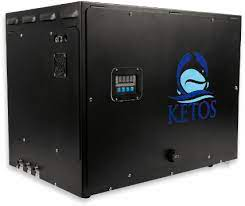Remotely Measure Levels of Free Chlorine in Water
Monitoring Water for Free Chlorine With KETOS SHIELD
Accurately Measure Levels of Free Chlorine in Water
Download our KETOS SHIELD overview to reveal:
- How we deliver EPA-compliant lab-precision accuracy with an extensive operating range (that continues to grow)
- How easy it is to install, integrate, and operate KETOS without disrupting existing infrastructure
- How we’ve eliminated the need for static water testing, constant cleaning, or manual calibration
- How we’ve made it easy to access your data – even if you are off-site. Check water quality on the go from your mobile, tablet, or laptop
Learn To Automate Free Chlorine Testing In Water With Lab-Accurate Results in Real-Time
"*" indicates required fields
Testing for Free Chlorine in Water
 KETOS SHIELD helps water operators cover all of their water testing parameters by providing quality monitoring in real time. Test for free chlorine and other variables – while saving upfront investment costs with our industry-leading $0-CAPEX subscription model.
KETOS SHIELD helps water operators cover all of their water testing parameters by providing quality monitoring in real time. Test for free chlorine and other variables – while saving upfront investment costs with our industry-leading $0-CAPEX subscription model.
KETOS SHIELD, an award-winning device, provides accurate monitoring for free chlorine and 30+ other water testing parameters (inorganics, heavy metals, environmental factors, etc.). Understand your water via a solution that provides real-time on-site lab accurate readings.
Why Monitor Water for Free Chlorine with KETOS
Free chlorine often exists in drinking water. Its presence indicates that a sufficient amount of chlorine was added to the water to prevent bacteria and virus contamination and to protect it from recontamination during transport to households. As such, it is used as one indication of the general potability of drinking water.
Chlorine is also an oxidizing agent in other water treatment and chemical processes.
However, chlorine, as a disinfectant, is also a potential irritant, and if levels of chlorine are too high, it can become an irritant and may have knock-on health effects, which is why monitoring the levels of chlorine in water is integral – especially if the water is meant to be fit for human consumption.
What are the Issues with Chlorine in Water?
Chlorine is a widely used disinfectant in water treatment, playing a crucial role in ensuring that drinking water is safe for consumption by eliminating harmful pathogens. However, while chlorine effectively combats waterborne diseases, its presence in treated water can give rise to several concerns and issues. Here are key challenges associated with chlorine in water:
- Taste and Odor: Chlorine can impart an unpleasant taste and odor to drinking water, often described as “chlorine-like” or “pool-like.” These sensory characteristics can diminish the palatability of water and discourage consumption, affecting consumer satisfaction and compliance with hydration recommendations.
- Disinfection Byproducts (DBPs): When chlorine reacts with organic matter present in water, disinfection byproducts (DBPs) can form, including trihalomethanes (THMs) and haloacetic acids (HAAs). Prolonged exposure to elevated levels of DBPs through drinking water consumption has been associated with adverse health effects, including increased risks of cancer and reproductive issues.
- Health Concerns: While chlorine effectively kills harmful pathogens, such as bacteria and viruses, its disinfection process can produce chemical byproducts that may pose health risks. Individuals with respiratory conditions, such as asthma, may experience exacerbations or increased symptoms when exposed to chlorine fumes or vapors during showering or bathing.
- Corrosion of Infrastructure: Chlorine can accelerate corrosion of metal pipes, fittings, and plumbing fixtures in water distribution systems. Corrosion-related issues can lead to leaks, pipe failures, and infrastructure damage, compromising the integrity of water distribution networks and necessitating costly repairs and replacements.
- Sensitive Populations: Certain populations, such as infants, young children, pregnant women, and immunocompromised individuals, may be more vulnerable to the potential health effects of chlorine and its byproducts. Monitoring and managing chlorine levels in drinking water are crucial to protect the health and well-being of these sensitive groups.
- Residual Chlorine: While chlorine disinfection effectively eliminates pathogens, maintaining a residual chlorine level in treated water is essential to prevent microbial regrowth and ensure continued protection against waterborne diseases. However, excessive residual chlorine levels can contribute to taste and odor issues and may indicate over-chlorination or inefficient treatment processes.
Causes of Free Chlorine in Water
Free chlorine in water primarily originates from disinfection processes employed in water treatment facilities. Chlorine is commonly used as a disinfectant to kill harmful bacteria, viruses, and other pathogens present in water sources, ensuring that the water is safe for consumption. During water treatment, chlorine is added to water in the form of chlorine gas, sodium hypochlorite, or calcium hypochlorite, where it reacts with organic matter and microorganisms to sanitize the water. However, residual free chlorine may remain in the treated water to provide ongoing protection against microbial contamination as the water travels through distribution systems to consumers. Additionally, chlorine can enter water bodies through runoff from industrial processes, wastewater discharges, and the use of chlorine-containing products in households and commercial establishments. While chlorine disinfection is crucial for public health, excessive levels of free chlorine in water can lead to undesirable tastes and odors, as well as potential health concerns. Therefore, monitoring and regulating free chlorine levels in water are essential to maintain water quality standards.
Acceptable Levels of Free Chlorine in Water by Industry
In various industries, maintaining acceptable levels of free chlorine in water is crucial for ensuring safety and quality. Free chlorine serves as a disinfectant, preventing the growth of harmful microorganisms in water systems. Different industries have specific guidelines for acceptable chlorine levels tailored to their processes and requirements. For instance, in the food and beverage sector, free chlorine levels typically range from 0.5 to 2.0 parts per million (ppm), while in swimming pools and spas, the range may be higher, around 1.0 to 3.0 ppm. Additionally, in healthcare facilities, such as hospitals and clinics, free chlorine levels might be maintained within a range of 1.5 to 5.0 ppm to ensure effective sanitation.
| Industry | Acceptable Free Chlorine Levels (ppm) |
|---|---|
| Food and Beverage | 0.5 – 2.0 |
| Swimming Pools and Spas | 1.0 – 3.0 |
| Healthcare Facilities | 1.5 – 5.0 |
How to Easily Monitor Water for Chlorine
Instead of measuring free chlorine with a meter that only measures a handful of conditions; the KETOS SHIELD is capable of mentoring dozens of water related issues — in real-time. Free chlorine is just one of the 30+ water testing parameters KETOS covers.
Free chlorine is merely a fraction of KETOS’s expansive coverage of water testing parameters. With over 30 parameters addressed, including pH, turbidity, and dissolved oxygen, KETOS provides a comprehensive solution for monitoring water quality, ensuring accurate analysis and proactive management for diverse applications and industries. Free chlorine monitoring is just one aspect of KETOS’s extensive coverage of water testing parameters. This capability for chlorine monitoring allows KETOS to ensure water safety and compliance with regulatory standards, providing users with critical data to maintain proper disinfection levels and reduce the risk of contamination.
Whether you’re analyzing lead levels in surface water, measuring the Langelier Saturation Index in process water for industrial use, or detecting iron in drinking water, KETOS’ automated water monitoring system offers efficient solutions. Save time and mitigate compliance issues with our advanced technology.
What Water Quality Parameter Do You Test Most Often?
The KETOS SHIELD remotely monitors dozens of water quality parameters. Which one do your water operators test most often?
KETOS Awards
















About KETOS
KETOS is a fully integrated platform that combines hardware, software, connectivity, automated reporting, predictive analytics, and maintenance to automate water monitoring and testing. KETOS enables water operators to identify and solve mission-critical water efficiency and quality challenges in real-time, or before they happen through predictive algorithms, to ensure that water meets specific quality and safety standards.

